Every business has its own rhythm. Bicycle sales pick up in spring, air conditioners in summer, and jackets and training courses in the fall. If you're not preparing for these surges ahead of time, your competitors will sail right past you on a wave of search traffic.
This article will break down how seasonal SEO actually works and how you can use it to pull in maximum traffic exactly when your audience is ready to buy. We'll look at the different types of seasonality, how to spot your growth periods, and how to turn spikes of interest into steady sales. You'll learn how to build a solid seasonal SEO strategy and get your site ready for peak times before they hit.
Seasonal SEO: How to Catch the Wave and Boost Sales When It Matters Most

When you're planning your ads or content, it's not just about knowing what your customers are looking for, but when they're looking for it. Seasonal demand spikes are a golden opportunity to maximize your sales without increasing your ad spend. But to capitalize on the moment, you need to prepare your site in advance, refresh your content, and tailor your keywords to match how your audience is behaving.
What is Seasonal SEO (And Why It Brings You the Best Customers)
Seasonal SEO is all about adjusting your search strategy for those times of year when interest in your products or services shoots up. Think "swimsuits" in summer or "gifts for coworkers" in December. These surges aren't random; they're predictable patterns you can plan for.
When you do seasonal content optimization, you're getting your content and site structure ready for future demand. You're not just reacting to a trend – you're working ahead of it. In essence, you're boosting your pages to the top of search results right when users start looking.
These customers are the most valuable. They already know what they want and are in the decision-making stage. So, seasonal SEO isn't just about visibility; it's about driving real sales. If you show up first in search, you're capturing the most motivated buyers.
The Different Types of Seasonality: Find Your Biggest Growth Opportunities
Not all seasonality is created equal. Generally, you can break it down into three types:
- Calendar-based. Tied to seasons or holidays. Classic examples are winter tires, back-to-school supplies, or pumpkins for Halloween.
- Weather-based. Triggered by temperature or climate shifts, not a date on the calendar. For example, as soon as a heatwave hits, searches for "portable fan" skyrocket.
- Trend-based. Driven by events, pop culture, or viral moments. This could be a spike in interest around a new movie, a meme, or a viral product.
To find your peaks, dive into the query statistics in Google Trends. This tool will show you exactly when users start actively searching for what you offer. You can use this data to build a seasonal content calendar and prepare your pages, banners, text, and promotions ahead of time.
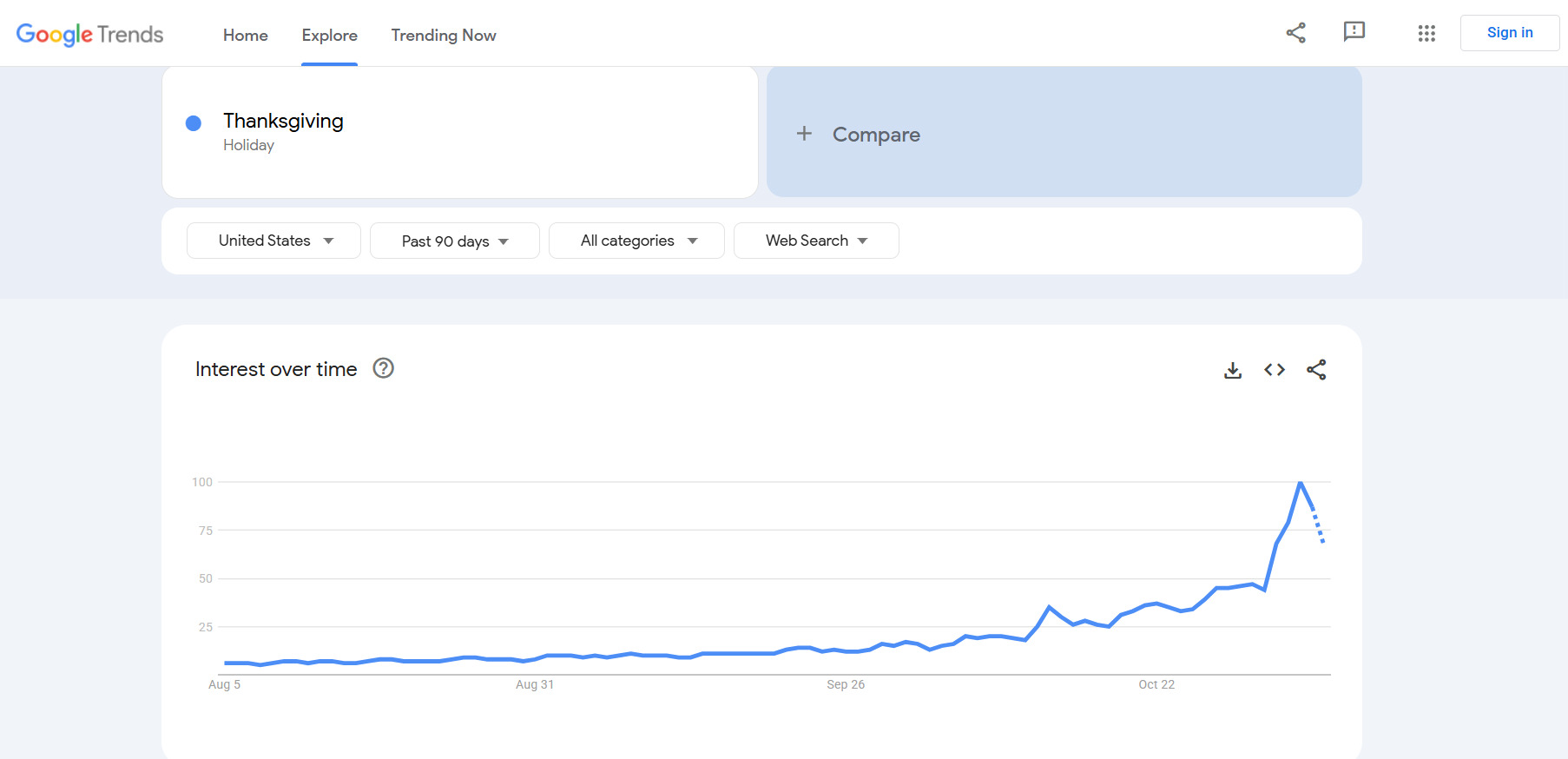
The key here is focus. Don't try to tackle every season at once. Instead, pick 2-3 periods where your audience is most active. That's how you'll see a real impact on your traffic and sales.
The Direct Line to Profit: Why Seasonal Visitors Convert Better
Seasonal visitors come with a purpose. They're not just browsing; they're looking for a solution right now.
Seasonal keywords are high-intent queries. When someone types "buy cheap ice skates" or "book Christmas family photos," they're ready to take action. If your page gives them exactly what they need, the sale happens much faster.
Plus, seasonal traffic spikes do wonders for your brand. When customers consistently see your site at the top of the results at the perfect moment, they start to see you as a go-to source. This builds trust and leads to repeat business when the next season rolls around.
A systematic approach to holiday marketing SEO turns your website into an engine for predictable growth. You're not waiting for traffic to come to you – you're managing customer flow according to the calendar.
Finding Seasonal Trends: From Raw Data to Real Insights
Understanding seasonal trends starts with the data. Without the numbers, you're just guessing. Statistics show you when your audience gets interested, which products are hot, and when to ramp up your promotion.
Digging Into Your Own Data: Uncover Seasonal Patterns in Google Analytics & Search Console
Before looking outward, see what your own numbers are telling you. Often, the best clues are hiding in plain sight within Google Analytics and Google Search Console. This data reveals when users visit most, which pages drive sales, and which queries pop up during certain months.
Start with a traffic report for the last two or three years. Compare the months side-by-side to spot the natural highs and lows. If your "bicycles" category always jumps in May and "spare parts" in July, you know when to push those categories harder.
In Search Console, keep an eye on the click and impression graphs for specific keywords. If you see "buy swimsuit" starting to trend in April, you need that content updated by March. This kind of prep work gets your page to the top right as interest peaks.
Don't miss the small but important details – use filters for country, device, and page type. Sometimes seasonality only shows up in mobile traffic or specific regions. These nuances help you fine-tune your seasonal content optimization and allocate your budget more effectively.
Tools to Forecast Demand: A Hands-On Guide to Google Trends, Ahrefs, and Semrush
Once you've looked inward, it's time to see what's happening in the wider world. These tools track search interest on a global scale.
Google Trends shows you when and where interest in a topic is rising or falling. Plug in a keyword and look at the trends by region and month. If you see "electric scooter" consistently taking off in April, that's your cue to update content, add new models, and boost your ads. Compare a few different queries to find the most promising ones.
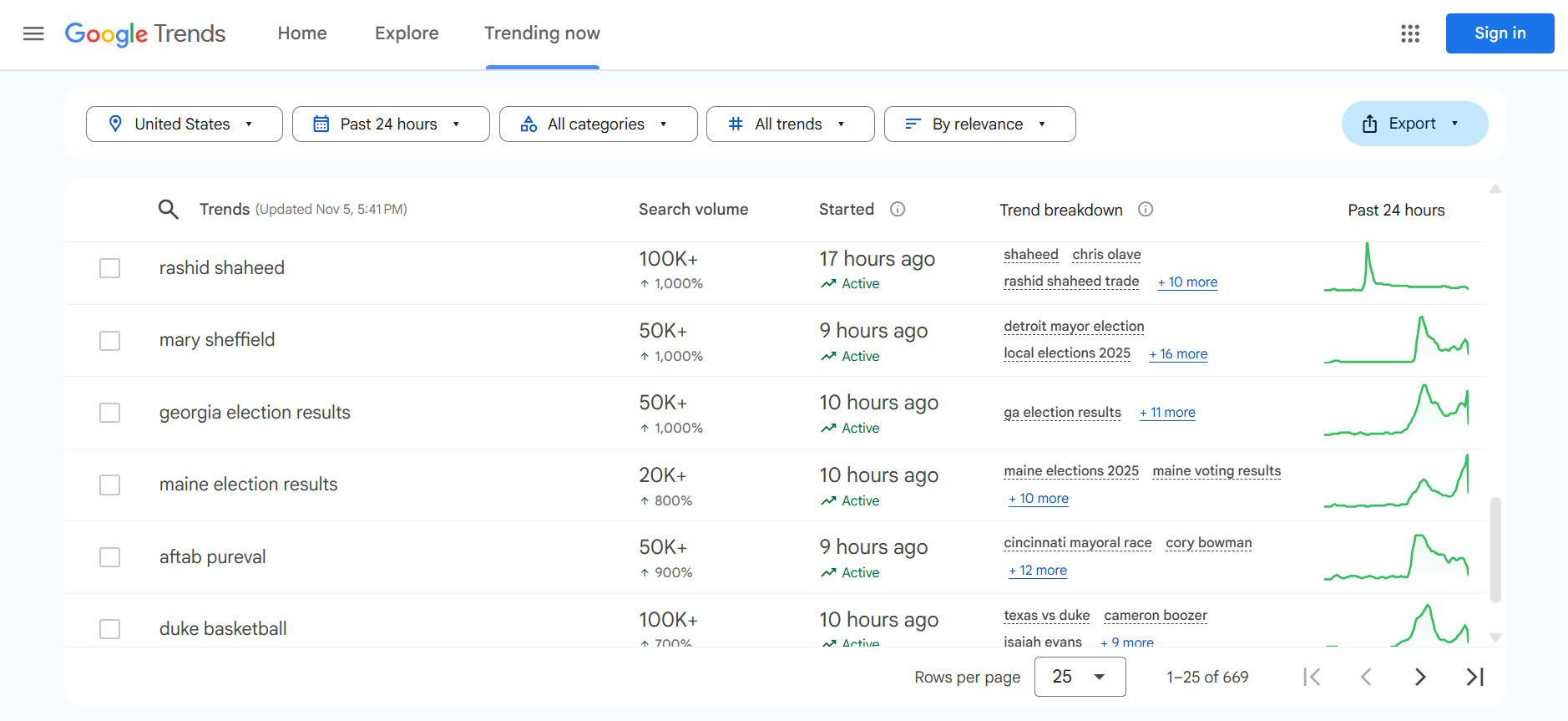
Ahrefs helps you gauge the volume and competition for seasonal keywords. The Keywords Explorer tool lets you see how fast interest is growing and which competitor pages are already ranking. This analysis shows you which queries to build into your content plan ahead of time.
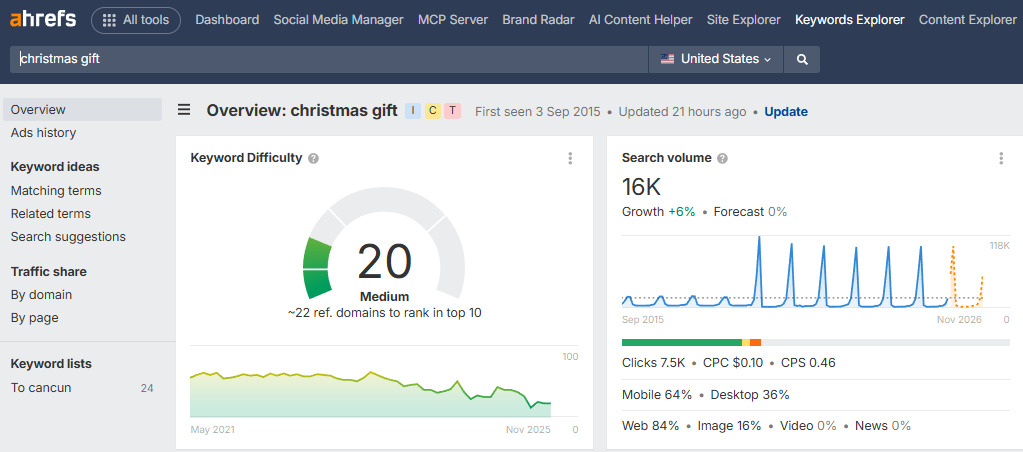
Semrush adds a layer of competitive intelligence. The Keyword Overview tool reveals which sites are grabbing traffic for your target queries at different times of the year. You can see when they publish their seasonal content, how their rankings shift, and which keywords drive the most clicks. This is incredibly useful for planning your time-based SEO based on what the market is doing, not just your own predictions.
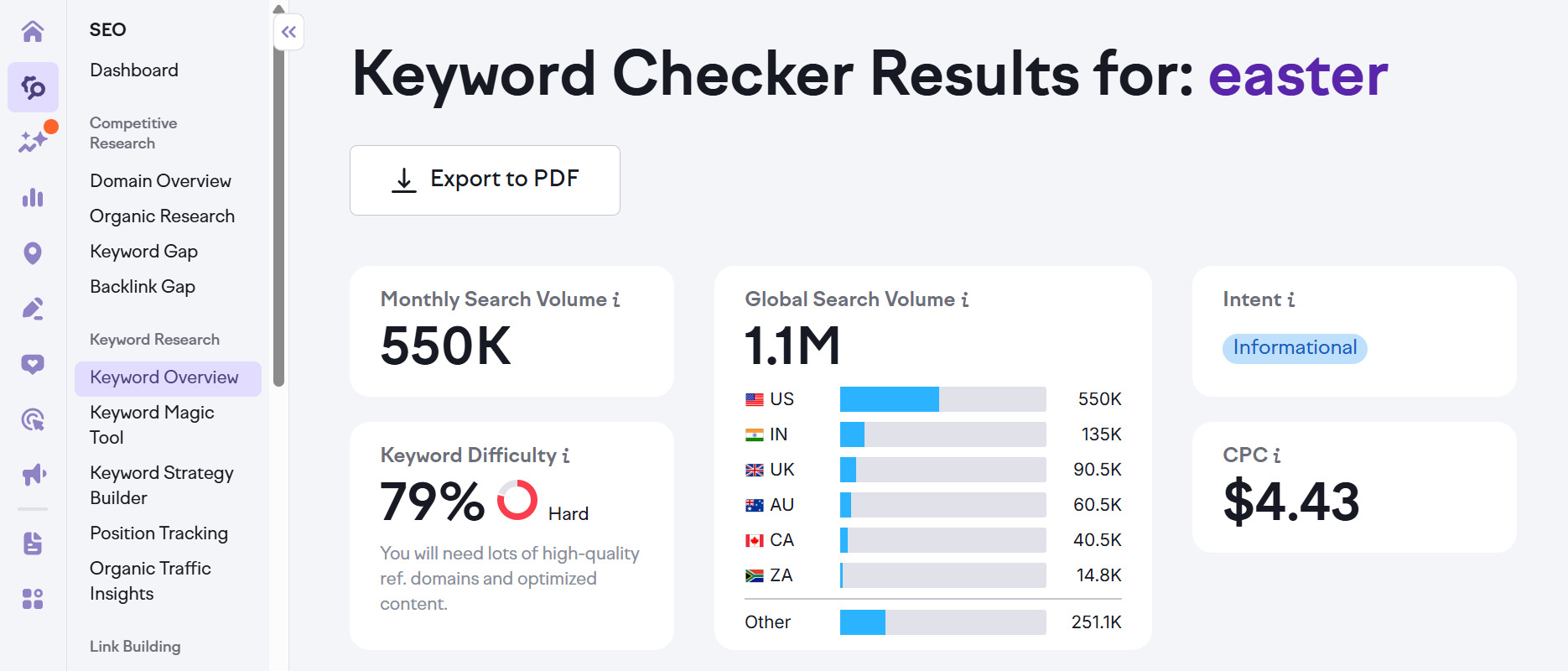
By combining these tools, you get a clear picture: when demand appears, which queries are heating up, and who's already winning the traffic. This is your foundation for a content calendar tied to real seasonal search trends.
Unconventional Idea Sources: How to Anticipate What Your Customers Will Want
Sometimes a trend hasn't hit the stats yet, but you can feel it in the air. To spot it before anyone else, look beyond the numbers and listen to real conversations.
- Survey your customers and staff. Your sales team is on the front lines and often hears shifts in customer questions first. Ask them what requests they're getting lately. Check in with loyal customers to see what's on their minds. These insights can spark ideas for new site sections or product description updates.
- Keep an eye on the competition. See what topics and promotions your rivals are launching a few weeks before the busy season. Analyzing their moves helps you anticipate market shifts and tweak your holiday marketing SEO strategy in time.
- Dive into forums and communities. Reddit, Quora, niche forums, and social media groups are like a live feed of audience sentiment. This is where people share plans, ask for advice, and talk about what's trending. If you see conversations about winter boots blowing up in September, you know demand is about to take off in October.
When you blend your internal analytics, forecasting tools, and these "human" sources, you get a complete picture of your audience's behavior. This lets you build a strategy based on facts, not guesses, and launch your seasonal content optimization just as the market starts to move.
The 90% Solution: Building Your Seasonal SEO Roadmap
A great idea without a plan goes nowhere. This is where you turn your predictions into action: what to write, when to publish it, who needs to be involved, and what you expect to achieve.
Why You Need a 2-4 Month Head Start
Search engines need time to "understand" and rank new content. It typically takes 2 to 4 months for an optimized page to settle into stable rankings. That's why an early start is non-negotiable – the sooner you begin, the better your chances of beating competitors to the top.
For example, sports stores start working on seasonal product SEO for skis and snowboards in August, not November. Tour operators kick things off in January for a spring sales peak. Getting ahead of the curve lets you spread out the work – from writing to link building – without a last-minute panic.
An early start also gives you time to properly test pages, update images, improve site speed, and fine-tune your internal links. All of this adds up to a bigger impact during the peak season.
The Three-Phase Model: What to Do Before, During, and After the Peak
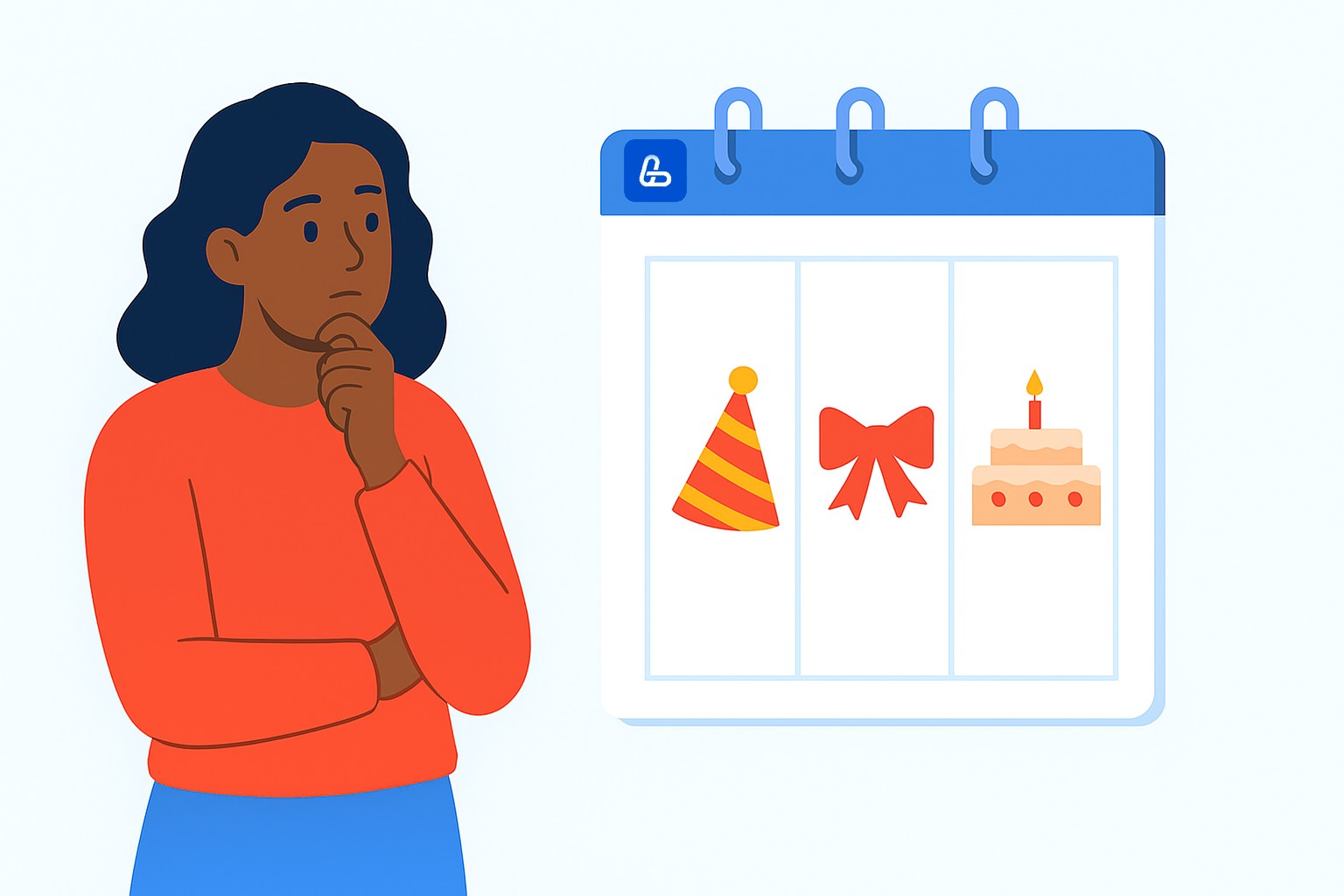
Successful seasonal content optimization runs on a cycle: before, during, and after the season. This model puts you in control of demand, instead of just reacting to it.
To make your seasonal SEO strategy deliver consistent results, split your year into three phases: pre-season, in-season, and post-season. Each one has its own focus, metrics, and tools.
Pre-season: Prep and Research.
This is your time for data crunching, content refreshing, and technical tweaks.
- Analyze last year's stats.
- Find your seasonal keywords.
- Update product cards, meta tags, and descriptions.
- Create and publish seasonal content (guides, gift ideas, articles, landing pages).
- Check your page speed and site structure.
The main goal? Make sure your site is fully prepped and indexed before demand takes off.
In-season: Promote and Monitor.
When the peak hits, it's all about visibility and conversion.
- Ramp up your internal linking.
- Launch seasonal promotions SEO and highlight them with banners.
- Watch your rankings and tweak page titles/meta descriptions if your CTR drops.
- Keep a close eye on conversions and user behavior in real-time.
The big thing here is to avoid dips. If you lose traffic at the peak of the season, it's tough to get it back.
Post-season: Analyze and Plan.
Once the rush is over, it's time for a deep dive into the results.
- Compare your key query performance and sales data.
- Figure out which pages drove the most growth.
- Note down when interest started to rise – you'll need this for next year.
- Update content, remove expired promotions, and test new CTAs.
This cycle turns holiday marketing SEO into a repeatable system. Every year, you're building on what you learned to get even better results.
How to Build a Content Calendar That Actually Works
A content calendar is what turns your strategy into a step-by-step plan. Without one, it's easy to miss the perfect moment to publish, update meta data, or flip the switch on an ad campaign.
To make your calendar truly useful, think beyond just dates. Include the content type, where you'll publish it, and how important it is.
Sample Content Calendar for "Gardening & Outdoor Living" Niche
| Month | Stage | Key Tasks | Content Type | Channel | Who's Responsible |
|---|---|---|---|---|---|
| February | Pre-season | Analyze seasonal search trends, research garden product demand, pick seasonal keywords | Report, keyword list | Blog, Spreadsheet | SEO Specialist |
| March | Pre-season | Create/update landing pages & categories (seeds, tools, decor) with seasonal content optimization | Long-form guides, product pages, banners | Website, Email | Copywriter, Content Manager, Designer |
| April | In-season (Start) | Publish seasonal content – planting tips, plant care guides, garden furniture articles | Blog posts, checklists, buying guides | Homepage, Blog, Social | Marketer |
| May | In-season (Peak) | Launch seasonal promotions SEO, update CTAs, push seasonal product SEO (grills, umbrellas) | News, banners, social posts | Homepage, Email, Blog, Social | SMM, Designer |
| June | In-season (End) | Analyze seasonal traffic spikes, gather sales stats, find top-performing content | Performance report | CRM, Drive | Analyst |
| July | Post-season | Prep content on storage, cleanup, summer decor. Plan time-based SEO for fall | Reviews, tips, planting schedules | Blog, Newsletter | Copywriter, SEO Specialist |
| August | Post-season / New Cycle | Update "evergreen" pages, refine keywords, create content for autumn | Text, infographics, banners | Website, Social | SEO Specialist, Content Manager |
This calendar follows the natural gardening cycle: prep work begins before planting, content peaks in spring, and the focus shifts to analysis and the next season as summer ends. This keeps your search rankings strong and makes holiday marketing SEO a year-round effort.
For visualizing your plan, tools like Notion, Airtable, ClickUp, or Google Calendar are great. They help you assign tasks, set reminders, and track what's in progress.
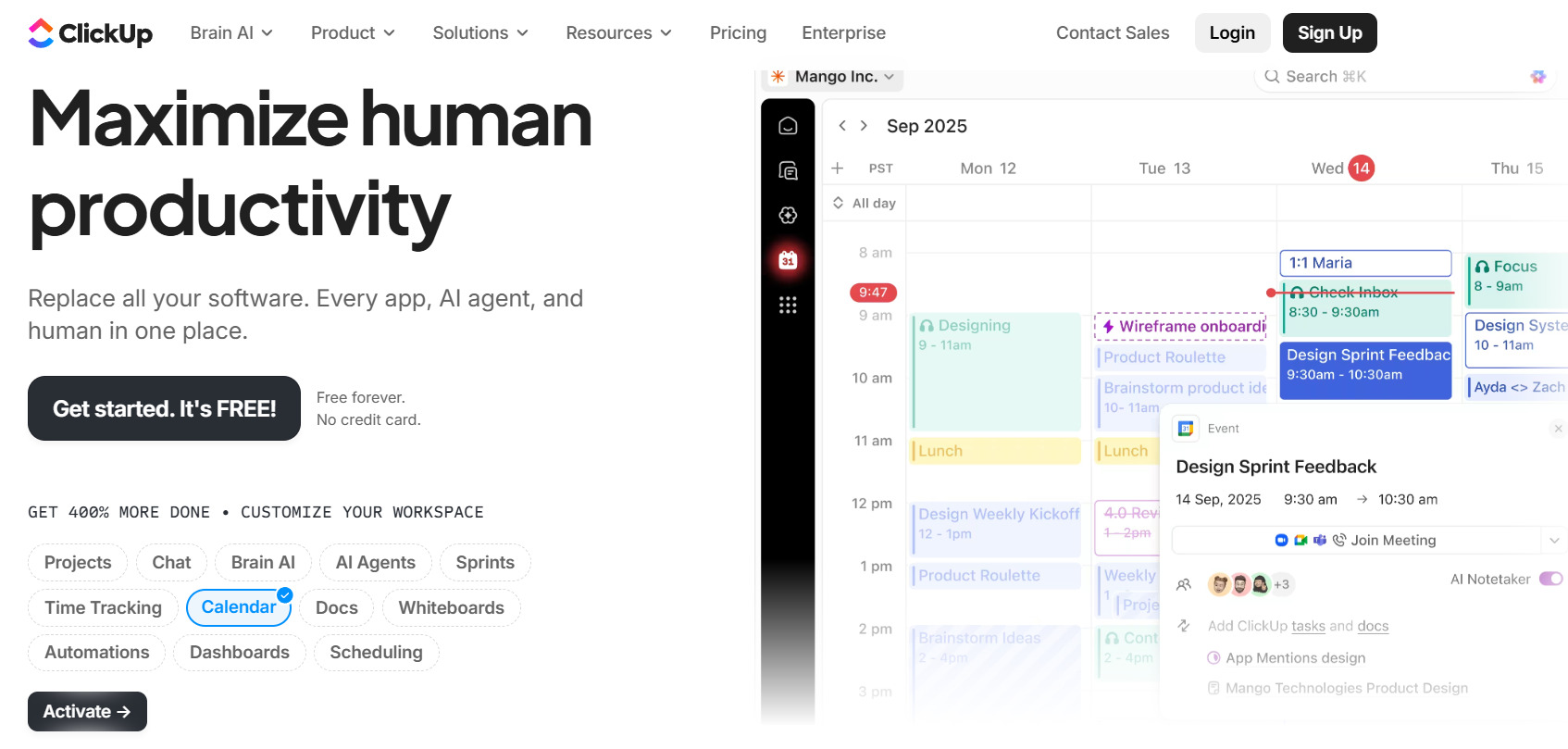
A good content calendar is a living document. You should update it as new data comes in, adapt it to new trends, and shift deadlines as needed. The most important thing is to keep a consistent publishing rhythm – this helps you maintain your rankings and makes your seasonal content optimization efforts pay off all year long.
Creating Killer Seasonal Content: From Idea to Launch
In seasonal SEO, your content is your secret weapon. It's not just about publishing articles; it's about anticipating what your audience will need and having it ready to go. One well-timed, helpful post can drive traffic and sales for years.
Picking the Right Format for Your Seasonal Content
Your seasonal content format needs to match the user's intent and the event itself. A single query like "Christmas gifts" can be tackled in many ways: a product roundup, a dedicated landing page, a blog post, or an interactive quiz.
When choosing a format, think about where your audience is in the buying journey. If they're just browsing for ideas, inspiring articles, lists, and quizzes work well. If they're ready to buy, landing pages and sales pages are more effective. Look at your customer data – clicks and engagement metrics will tell you which formats work best for your niche.
Format Ideas by Season and Holiday:
- Christmas & New Year: Gift guides, holiday sale pages, articles on budgeting for the holidays.
- Valentine's Day: Gift ideas for him/her, couple's deals, romantic date inspiration.
- Easter: Family-focused content: brunch recipes, DIY home decor.
- Summer: Travel guides, beach essentials, articles on summer activities.
- Halloween: Costume ideas, party decor, landing pages for limited-edition products.
- Black Friday & Cyber Monday: Dedicated sale pages, "best deal" roundups, countdown timers.
You can adapt any of these topics for different channels. A single guide can become a newsletter, a Pinterest infographic, and an Instagram carousel. The goal is to be everywhere your audience is, and to show up in search when those seasonal traffic spikes happen.
The "Evergreen URL" Strategy: Making One Page Work for Years
A common mistake is creating a new page every year for the same event: /black-friday-2024/, /black-friday-2025/, and so on.
Each time, you're starting from zero, losing all the link authority and ranking history you built up. A much smarter approach is to use an evergreen URL that stays the same year after year.
Good examples:
- /deals/black-friday/
- /gifts/christmas/
- /sale/summer-clearance/
To keep an "evergreen" page relevant, you need to refresh the content regularly – not just the text, but also the images, internal links, and data. Add sections for new trends, promotions, or customer reviews to show search engines the page is active. Keep a log of your updates; this helps with analytics and signals to search engines that the page is constantly improving. This turns a single page into a long-term source of seasonal traffic.
This approach protects your SEO value:
- The page keeps all its backlinks and authority.
- Search engines recognize and rank updates faster.
- Users can bookmark the page and come back to it next year.
On-Page Optimization: Weaving Seasonal Keywords in Naturally

Search engines love structure, and readers love a smooth experience. With seasonal content optimization, you need to balance both. Your text should sound natural and be easy to read. Use a conversational tone and work keywords into your tips, product descriptions, and subheadings.
Focus on being helpful. Search engines are getting better at understanding context, not just counting keywords. Before you hit "publish," read the text out loud. If it sounds natural, you're on the right track.
A Few Practical Tips:
- Include your main seasonal keywords in the H1 and a couple of H2s, but don't overdo it.
- Work the primary keyword into the first 100 words of the content.
- Use natural variations like "Holiday Offers," "Christmas Sales," or "Black Friday Deals."
- Update the meta title and description to reflect the current year.
- Link to other relevant pages and articles on your site.
And don't forget the visuals. Themed images, ALT tags that include seasonal keywords, and proper data markup (like product schema) can all boost your click-through rate and rankings.
Breathing New Life into Old Content: Your Untapped Goldmine
Last year's content is a huge asset. If a page already gets traffic, don't replace it – refresh it. Search engines reward fresh content, but they also respect established pages. This combination is perfect for seasonal content optimization.
How to Give Old Content a Boost:
- Check that all the information, prices, and product availability are current.
- Swap in new images, banners, and calls-to-action.
- Refresh the headlines and meta tags (at a minimum, update the year).
- Add internal links to your newer, related pages.
- Monitor the results in Google Search Console – often, an updated page will bounce back to the top quickly.
Once you've updated a piece, promote it again. Share it in your newsletter, post about it on social media, and feature it on your homepage. Use the link in your new content to strengthen your site's internal linking and help the page regain its rankings faster.
This approach is especially powerful for seasonal product SEO. Instead of starting from scratch every year, you're building on a foundation, growing your authority, and staying visible before, during, and after the season.
Tech & Promotion: Getting Your Site Ready for a Traffic Surge
When peak season approaches, your site needs to be rock-solid. Little issues you barely notice during quieter times can cost you leads and sales when traffic pours in. Before you launch any seasonal SEO campaign, make sure your technical foundation is strong and your promotion channels are connected.
The key is to work ahead. Your optimizations, page updates, link audits, and analytics should all be in place at least a month before the peak. This gives search engines time to process the changes and lets you stress-test your site under a heavier load.
Strategic Interlinking: Weaving Seasonal Pages into Your Site's Fabric
Many sites create special pages for seasonal content but then leave them isolated. Without internal links, these pages feel unimportant to search engines and are hard for users to find.
Avoid this by planning your interlinking strategy early:
- Link to your seasonal pages from relevant category pages and blog posts.
- Use contextual links within popular articles (e.g., "Check out our New Year's gift guide").
- Create a dedicated hub or section for seasonal promotions SEO so users can easily find all your special offers.
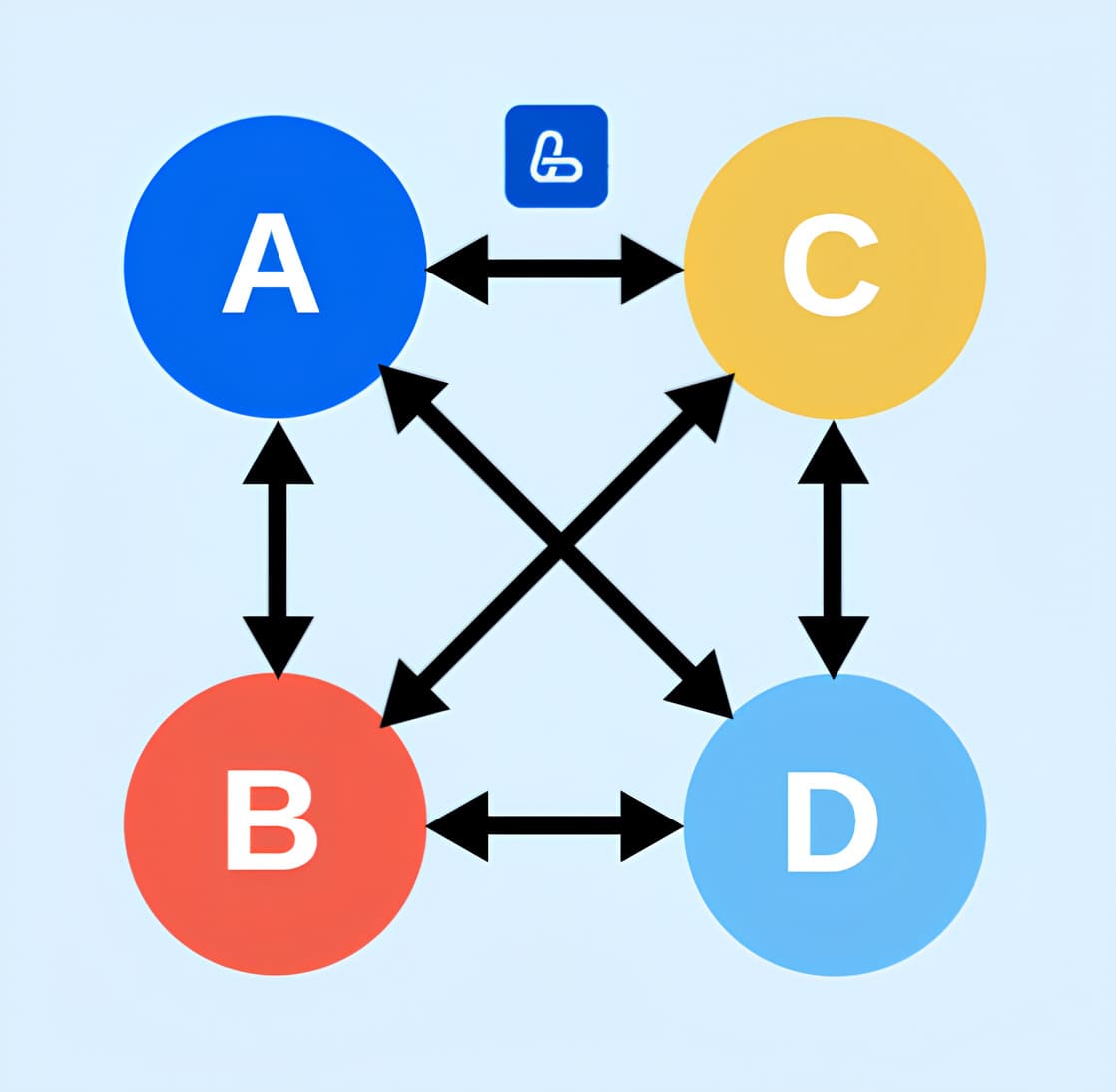
This kind of structure spreads "link juice" throughout your site and helps with indexing. It also keeps people exploring your site longer, which increases the chances they'll make a purchase.
The Pre-Season Technical Checklist
Before the traffic hits, audit your site like a pilot checks a plane before takeoff. A slow page, a broken link, or a glitchy form can kill your conversion rate at the worst possible time.
Your pre-season checklist:
- Speed: Run a Core Web Vitals report. If pages take more than 3 seconds to load, optimize your images and caching.
- Mobile-Friendliness: Most seasonal keywords are searched on phones, especially around holidays.
- Indexing: Make sure your seasonal pages aren't blocked and are included in your sitemap.
- Clean URLs: Use logical, simple URLs like /winter-sale or /halloween-costumes.
- Schema Markup: For products and promotions, add schema.org markup (Product, Offer). This can make your listings look better in search results.
- Smart Redirects: Redirect last year's seasonal URLs to this year's pages so you don't lose any link equity.
A thorough technical audit isn't a one-time thing. Make it a regular ritual before each peak season. Fewer errors mean higher rankings and more reliable conversions.
Local SEO for Seasonal Searches
If you have a physical location – a store, restaurant, or service area – you need to adapt your seasonal content optimization for local searches.
For seasonal local SEO, you should:
- Update your Google Business Profile.
- Post your seasonal hours and promotions.
- Add location-based keywords to your profile and meta descriptions.
- Encourage fresh reviews during the season – search engines see this as a sign you're active and relevant.
Local searches often spike faster than general ones. Fine-tuning your seasonal product SEO for specific cities helps you grab customers who are looking to buy nearby, right now.
Cross-Channel Promotion: Email and Social Media
SEO doesn't exist in a vacuum. To make the most of a demand spike, get your other channels involved.
- Email is your best warm-up tool. Tease the upcoming season with helpful tips, gift guides, or early access. This primes your audience to visit your site when the seasonal traffic spikes begin.
- Social media amplifies your reach. Create content that mirrors what's on your site: quick tips, behind-the-scenes, special offers. Syncing your messaging and timing across platforms boosts reach and sends positive signals to search engines.
- Retargeting brings people back. Show ads to visitors who checked out your seasonal content but didn't convert. Remind them about your offer or that the sale is ending soon.
When SEO, email, and social work together, a seasonal peak becomes more than a sales blip – it's a brand-building moment. Customers see you in search, get an email, and spot a social post, which builds trust and reinforces your message.
A connected strategy turns holiday marketing SEO into a powerful, unified system. You're not just chasing trends; you're orchestrating demand – on your terms, with maximum impact.
Measuring Success and Planning for Next Year

Seasonal SEO is a cycle. Every year brings new search terms, new competitors, and new user habits. If you track your results and learn from them, each season will be more successful than the last.
What Success Looks Like: Which Metrics Actually Matter
Not all traffic is good traffic. Your seasonal efforts should bring in visitors who actually convert, not just bump up your pageviews.
Keep an eye on these key metrics:
- Organic Traffic: An increase in search visits for your target seasonal keywords means you're hitting the mark.
- Conversion Rate: Compare your purchase or lead rate during the peak to your off-season rate. A 15–30% bump is a solid sign you've attracted the right crowd.
- Average Order Value (AOV): Seasonal shoppers are often ready to spend more. A higher AOV means your content and offers resonated.
- CTR & Rankings: See which pages climbed the rankings and how their click-through rates improved. Even a small CTR jump can lead to a big sales increase.
- Engagement: Metrics like time on site and pages per session tell you if your content met user expectations.
Look at the relationship between the numbers. If your traffic soared but conversions tanked, you might have targeted keywords that were too broad.
The Right Way to Measure: Year-over-Year Comparison
For a true picture of your performance, you must compare year-over-year.
Example: You're running seasonal product SEO for camping gear. Compare your organic traffic and sales from July 2025 to July 2024. If you see growth, your plan worked. If not, dig into why – did competitors get more aggressive? Did new keywords emerge?
For an accurate comparison:
- Use the exact same date ranges (e.g., June 1–August 31 for both years).
- Account for external factors like the weather or the economy.
- Visualize the trends in Google Looker Studio.
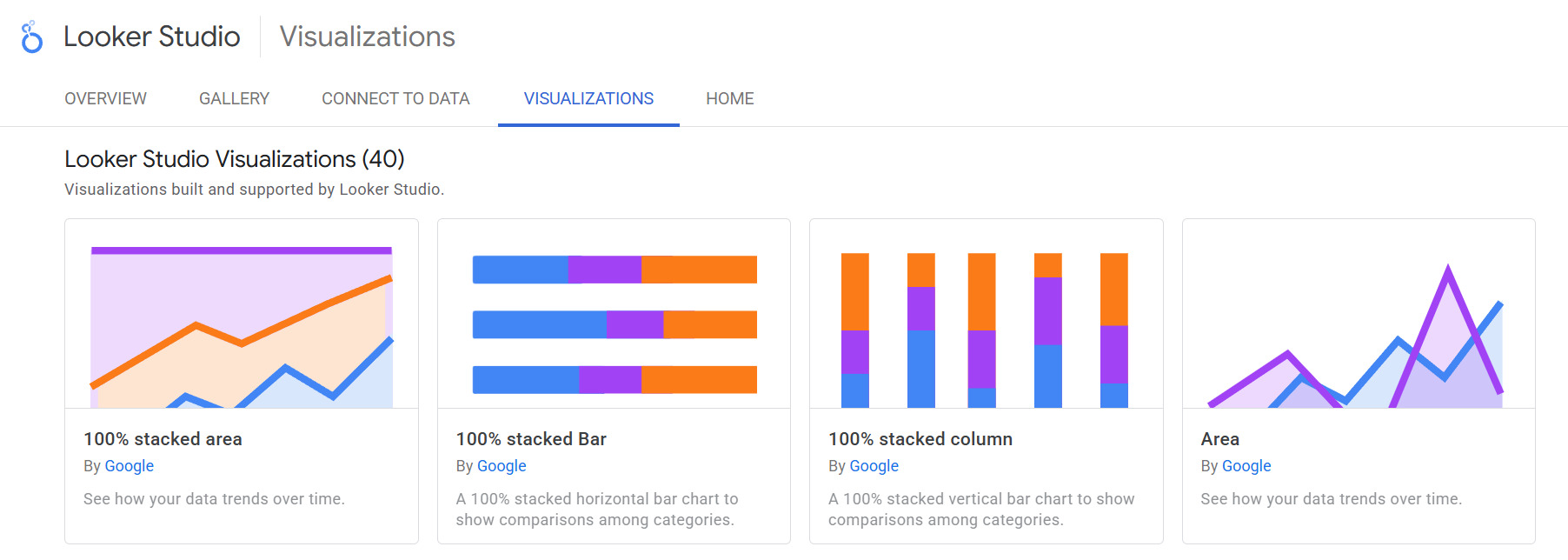
This method shows you real trends, not just random fluctuations. You'll see which pages are consistent winners and which are slipping. This is your blueprint for improving next year's seasonal content optimization.
Wrapping Up the Season: Turning Data into Your Next Game Plan
When the campaign is over, don't just move on. Document your findings right away. The best practice is to create a "Seasonal Recap" report that details what worked and what didn't.
Your post-season report should include:
- The top-performing seasonal keywords.
- The pages and content formats that drove the most conversions.
- Any technical issues that caused problems.
- Which promotion channels (partners, links, ads) delivered the best ROI.
- How your brand's search visibility changed from the previous year.
After the analysis, huddle with your team. Decide which pages to update, which rising queries to target, and which topics to expand on. For instance, if "gardening tools" were a summer hit, an "autumn harvest storage" section is a logical next step.
And don't stop making improvements:
- Keep adding internal links between related pages.
- Tweak your meta tags to match how people are searching.
- Don't delete seasonal pages after the peak – just update them to be relevant year-round.
This way, every new season builds on the last. You're not starting from zero; you're using your experience, your data, and your pre-built content to get better results. Over time, holiday marketing SEO stops feeling like a series of campaigns and becomes a reliable system for steady growth in traffic, sales, and brand loyalty.
Knowing When to Bring in the Pros
Even with a solid plan, seasonal SEO demands constant attention. As competition gets tougher and Google's algorithms evolve, results can be unpredictable. One misstep can cost you the top spot to a competitor. That's when it's crucial to know your limits and consider getting expert help.
The Future of Seasonal SEO: AI and E-E-A-T
Search is getting smarter. Google is baking AI into its core – from the Search Generative Experience (SGE) to models like BERT. These systems are learning to understand user intent and content quality, not just keywords. Optimizing for AI Overviews will soon be a key way to stand out.
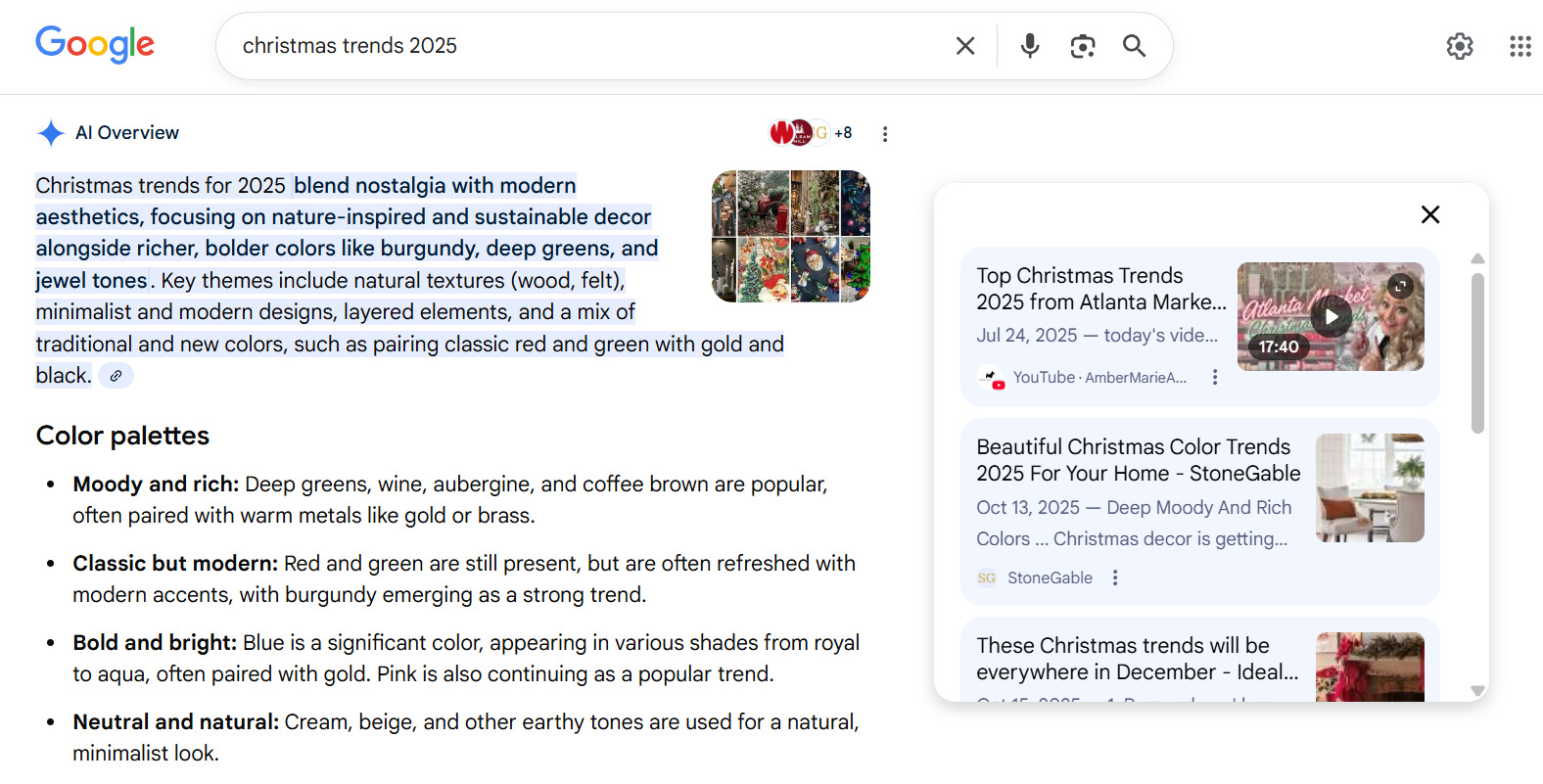
Now, seasonal content optimization is less about keyword density and more about meaning and expertise. Your content should be written by someone who knows their stuff, backed by real experience and reliable data (E-E-A-T: Experience, Expertise, Authoritativeness, Trustworthiness). A post about "winter tires" shouldn't just list products; it should explain performance differences, cite real tests, and offer expert advice.
AI is also revolutionizing how we spot seasonal search trends. Advanced tools can analyze millions of data points to predict which topics will explode next week or next month. This gives pros a serious head start in preparing seasonal content.
The future of SEO belongs to those who truly understand their audience and can act at the right time. The winners will be the ones who blend data, technology, and strategy seamlessly.
Common Pitfalls in Seasonal SEO
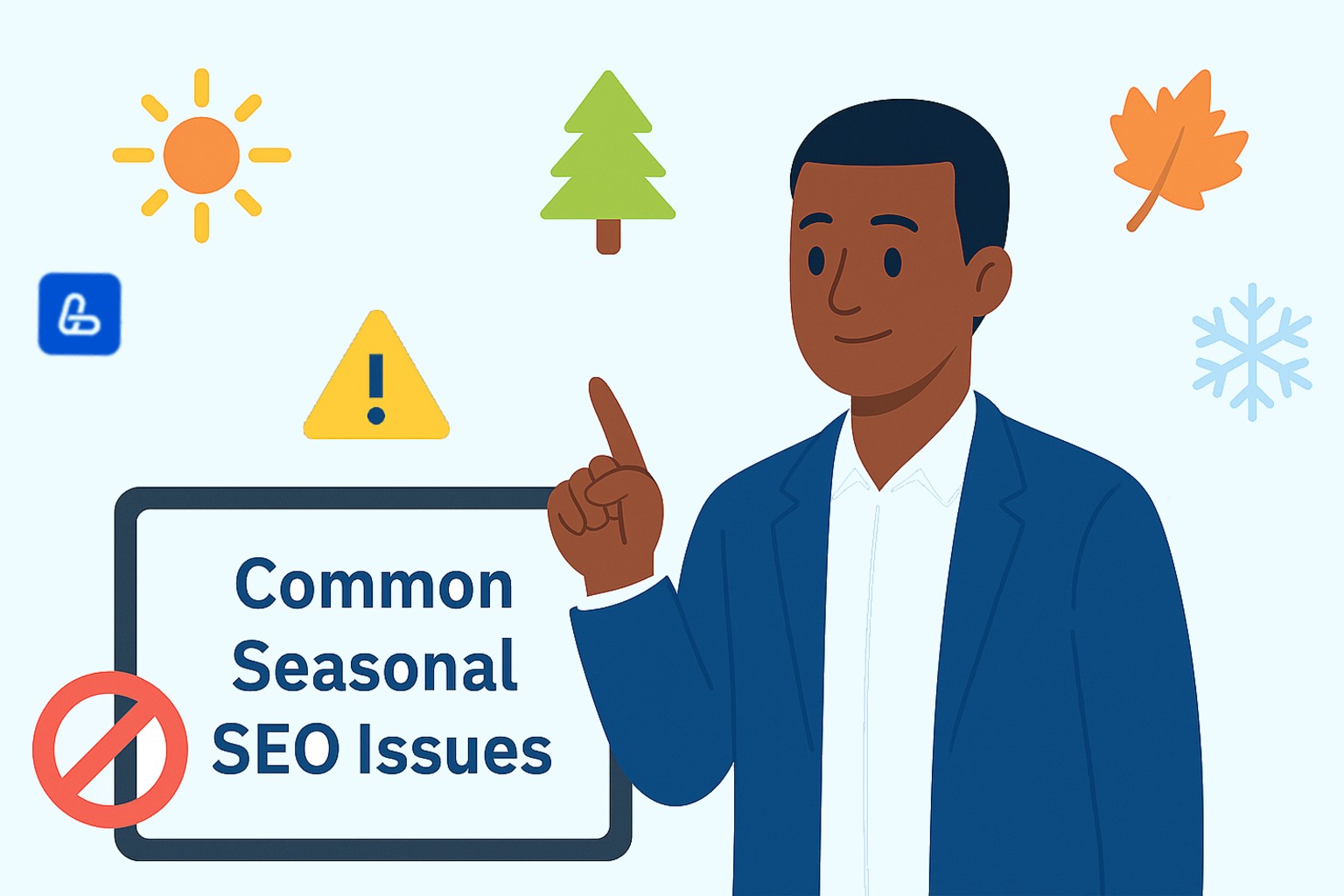
Even savvy teams can lose ground during peak season by making simple errors. Watch out for these:
- Starting too late. Publishing content a week before the peak means search engines won't rank it in time.
- Creating new URLs every year. This splinters your link authority and forces you to start over.
- Skipping the post-mortem. If you don't analyze what worked, you'll repeat the same mistakes.
- Letting seasonal pages become orphans. If they aren't linked from your main site, they won't rank well.
- Ignoring technical performance. A slow or crashing site during a traffic surge is a conversion killer.
You can avoid these issues by creating a time-based SEO calendar, running a pre-season audit, and ensuring your site is technically sound. The mantra is simple: plan your work before the season begins.
When a DIY Approach Isn't Enough
Seasonal content optimization plays out differently in every niche. In B2C (e.g., retail, travel), SEO is driven by dates and emotions. In B2B, seasonality might be tied to fiscal years, trade shows, or budgeting cycles.
Some situations are especially tricky:
- Regional variations. Demand peaks can vary by climate. Southerners might search for "air conditioning" months before Northerners.
- High-consideration purchases. For healthcare, legal, or construction services, the sales cycle is long. You need to mix seasonal keywords with top-of-funnel content like guides and checklists.
- Low-volume niches. When overall search demand is small, success depends on hyper-targeted pages, local SEO, and strategic links.
This is where an agency's experience pays off. They've seen these scenarios before, they know which levers to pull, and they can build a strategy that accounts for micro-trends – short, hyper-profitable demand windows.
Let the Experts Handle Your Seasonal SEO
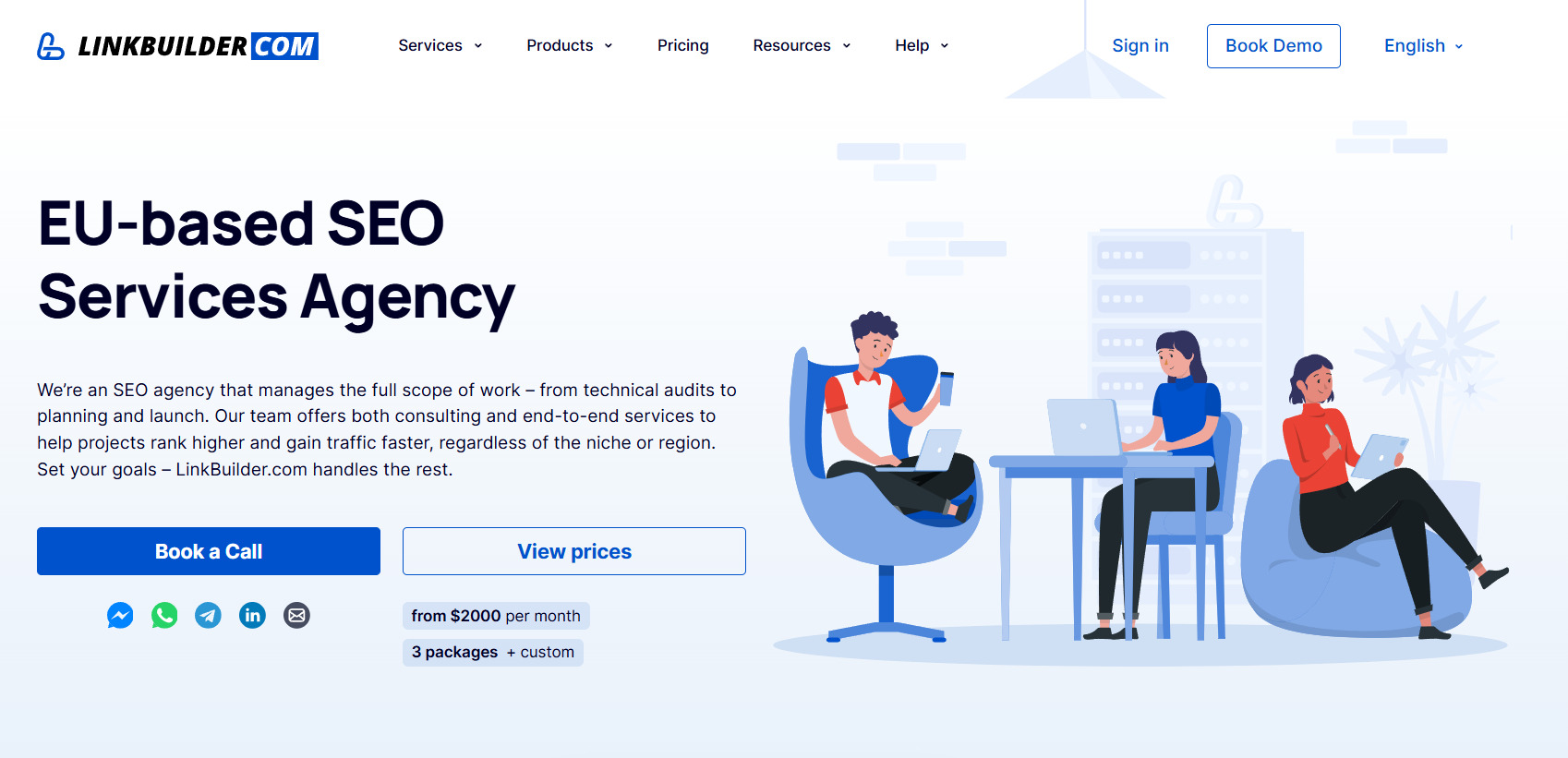
True holiday season SEO isn't just about content; it's a team sport requiring analysts, writers, technicians, and link builders. At LinkBuilder.com, we manage this entire process, turning seasonal spikes into a predictable, recurring revenue stream.
Here’s how we do it:
- We audit your site and analyze demand to pinpoint your seasonal traffic spikes and growth opportunities.
- We find the right seasonal keywords and build targeted pages for each peak period.
- We craft a linking strategy (internal and external) to power up your seasonal sections.
- We optimize your site's technical backbone to handle heavy traffic.
- We integrate SEO with your email and social channels for a unified marketing front.
We stay on top of search engine updates, refresh content, pivot strategy when needed, and use proven tools. This ensures your rankings hold steady, even when the algorithms change.
If you're ready for holiday marketing SEO that delivers steady growth instead of random bursts, partnering with experts is the way to go. You can focus on running your business, and we'll handle your SEO calendar, making sure you're at the top of the results for every peak season.
Schedule a call with us – let's make your business the top choice when demand is highest.








